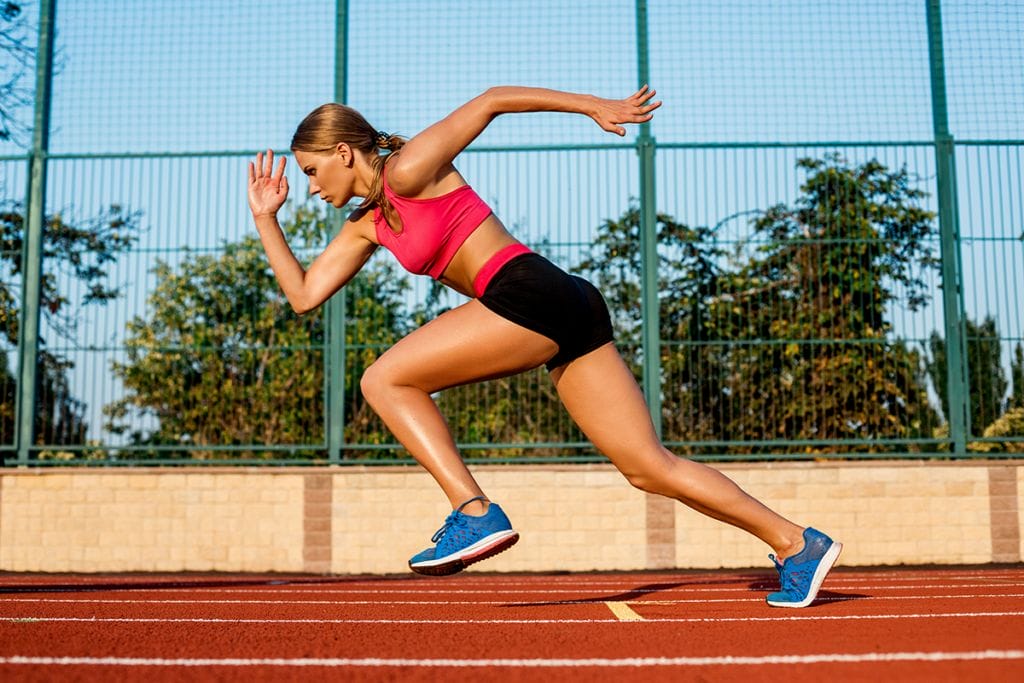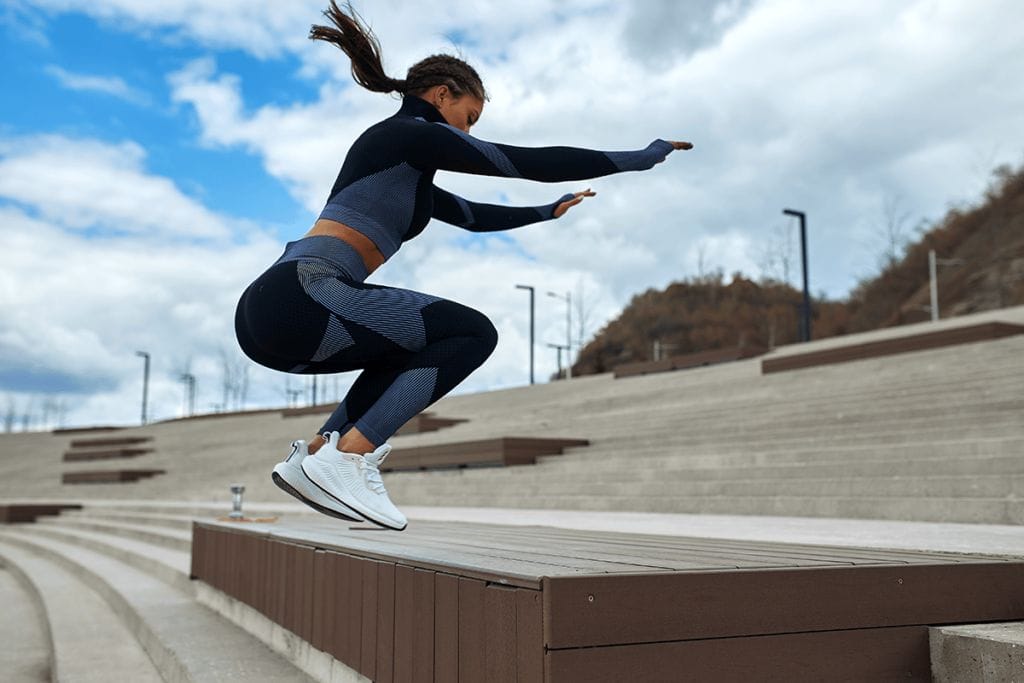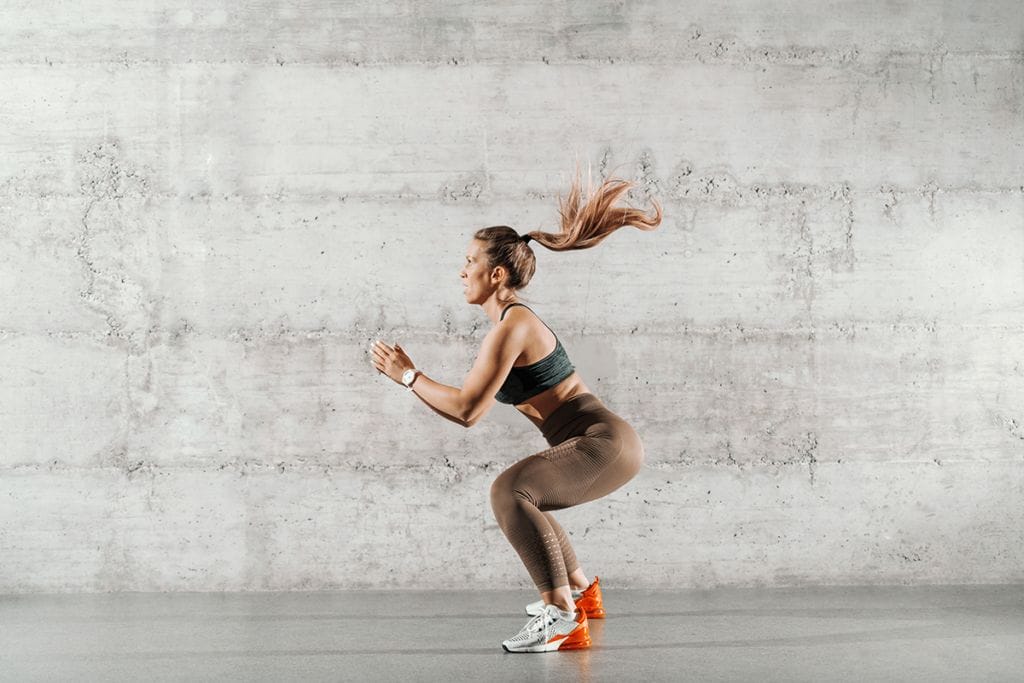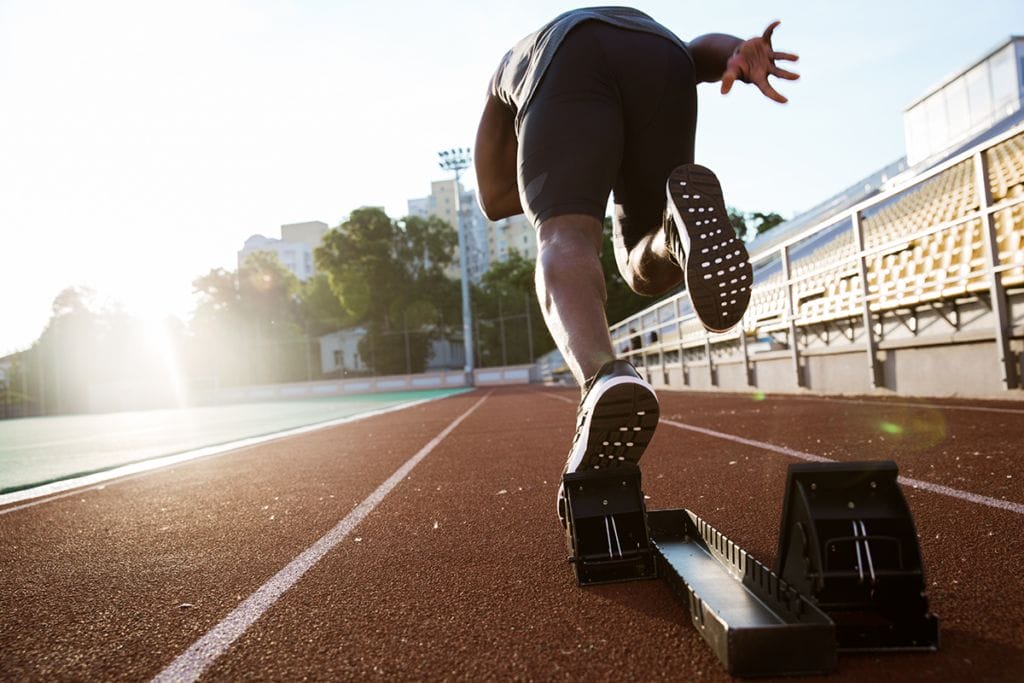Running faster and jumping higher are closely related—and both your maximum speed and your vertical jump can be improved with the right type of training.
Speed training is important for any athlete looking to improve their performance. Whether you’re a sprinter, a football player, a basketball player, or just trying to get faster for your next 10K, these tips can help.
We’ll cover everything from the basics of sprinting mechanics to more advanced concepts like plyometrics and speed endurance training. By the end, you’ll have a better understanding of how to improve your speed and seek out a speed training program that’s tailored to your needs.
As mentioned earlier, running and jumping are more related than many people think. By building strength, power, and speed, you’ll be able to jump higher and farther as well. If you’re a professional athlete who wants to move faster in a specific sport or just a weekend warrior who wants to improve their 5K time, speed training and the tips in this guide can help you do just that.

Ready to get started? On your mark… get set… let’s go!
Sprinting Mechanics
Before we get into more of the nitty-gritty of speed training, it’s important to understand the basic mechanics of sprinting. This will help you understand why certain exercises and drills are beneficial for improving your speed.
The first thing to know is that sprinting doesn’t just use the legs—it’s a whole-body movement. While yes, your legs do the majority of the work, your arms, trunk, and head also play important roles in helping you maintain your balance and generate power.
When you’re sprinting, your goal should be to maintain a tall posture and keep your center of gravity over your midfoot. You should feel like you’re driving your knees up and forward—rather than just pumping them up and down.
Your elbows should be bent at a 90-degree angle, with your hands relaxed and open. You want to make sure that your arms are driving forward and back—not across your body. Remember, your legs follow your arms.
As you can see, proper sprinting mechanics are important for both balance and power. Now let’s take a look at some of the specific exercises and drills you can do to improve your strength and athletic speed.
Plyometrics
Plyometrics are a type of exercise that uses explosive movements to help improve power and speed. These exercises typically involve jumping or bounding, which helps train your muscles to produce more force in a shorter amount of time.
Plyometric exercises are an important part of any speed training program, as they can help you develop the explosive power needed to sprint faster.
Here are a few examples of plyometric exercises that you can add to your training program:
- Box jumps: Stand in front of a box or other elevated surface. Bend your knees and swing your arms back, then jump up onto the box. Land softly with bent knees and immediately jump back down. Repeat for 10-12 repetitions.
- Squat jumps: Start in a squat position with your feet shoulder-width apart and your hands behind your head. Jump up as high as you can, then land softly back in the squat position. Repeat for 10-12 repetitions.
- Tuck jumps: Start in a standing position with your feet shoulder-width apart. Bend your knees and swing your arms back, then jump up and tuck your knees into your chest. Land softly with bent knees and immediately jump back up. Repeat for 10-12 repetitions.
Speed Training Drills
In addition to plyometric exercises, there are a variety of speed training drills you can do to help improve your sprinting form and technique. These drills are designed to help you move more efficiently, accelerate faster, and generate more power with each stride.
Your running form and your sprinting form are very important, as improper form can lead to wasted energy and decreased speed.
Here are a few examples of speed training drills that you can add to your program:
- High knees: Stand tall with your feet shoulder-width apart and your hands on your hips. Drive one knee up towards your chest, then quickly lower it back down and repeat with the other leg. Continue alternating legs for 20-30 seconds.
- Butt kicks: Start in a standing position with your feet shoulder-width apart and your hands on your hips. Kick one heel back towards your butt, then quickly lower it back down and repeat with the other leg. Continue alternating legs for 20-30 seconds.
- Skaters: Start in a standing position with your feet together and your arms at your sides. Jump to the side, landing on one foot while keeping the other foot off the ground. Immediately jump to the other side, landing on the other foot. Continue jumping side to side for 20-30 seconds.
Speed Endurance Training
Speed endurance training is a type of interval training that alternates between periods of high-intensity sprinting and lower-intensity recovery. This type of training helps improve your body’s ability to sustain high speeds over extended periods of time.
Here is an example of a speed endurance workout that you can add to your training program:
- Warm up with 5-10 minutes of light running or jogging.
- Sprint for 30 seconds, then recover for 1 minute by walking or jogging slowly.
- Repeat this cycle 8-10 times.
- Cool down with 5-10 minutes of light walking or jogging.
Conclusion
As you can see, there are a variety of exercises and drills you can do to improve your speed. By adding these exercises to your training program, you can help improve your sprinting performance and run faster and jump higher than ever before.
And if you really want to run faster and jump higher, consider signing up for speed and agility training. Programs like the Accelerator Program at Speed Mechanics are designed to help athletes aged 10 – 18 develop the speed, strength, and explosive power needed to take their performance to the next level. Speed Mechanics also offers personal coaching/speed training for adults and its Momentum program for college athletes.





